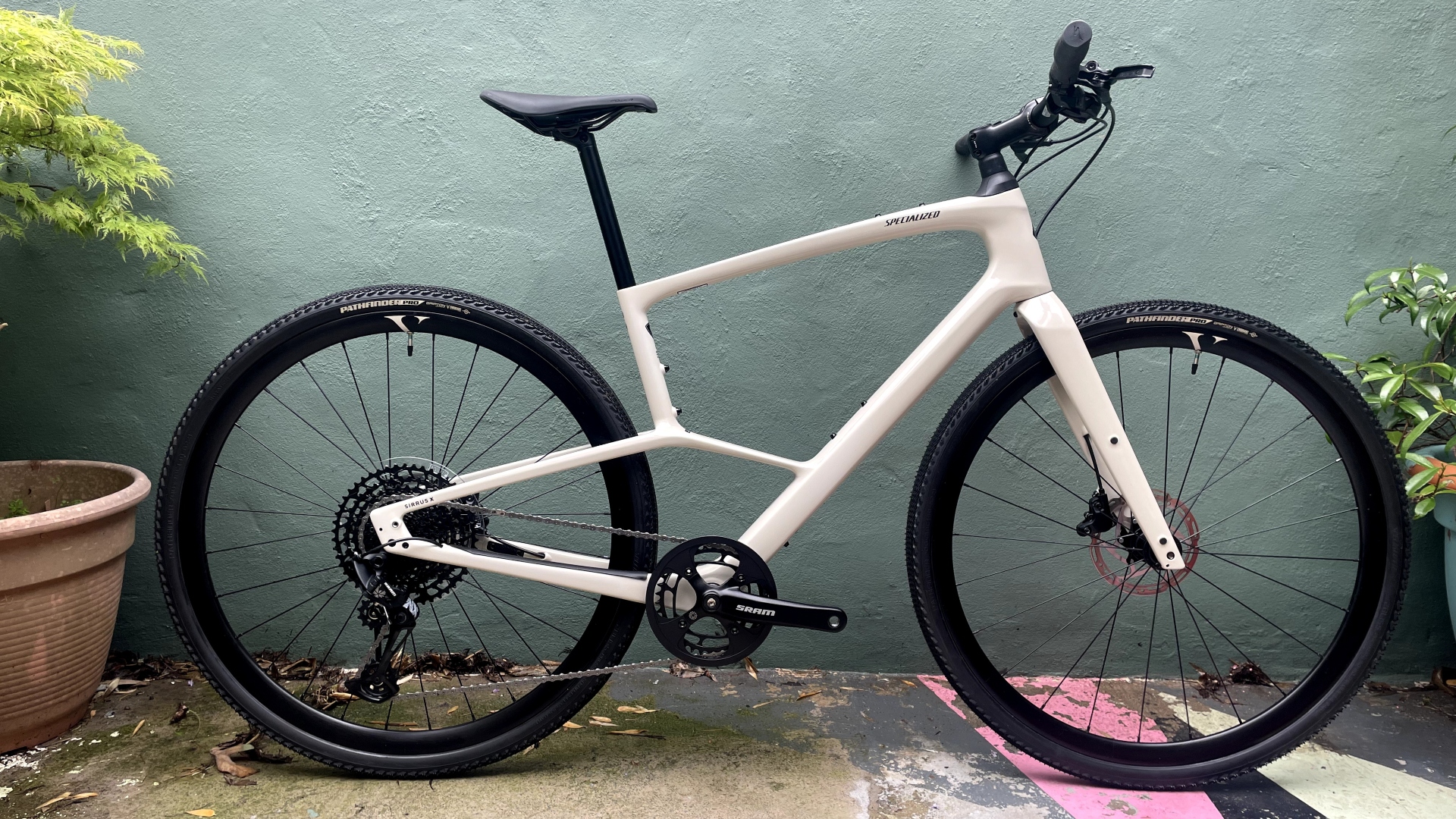
Now in its fifth decade of production, the Sirrus remains a stalwart of Specialized’s line-up. While originally created as an entry level racer (designed by Jim Merz no less) its name has been forged over the years as one of the best hybrid bikes - reliable yet sporty. Naturally it’s see plenty of development during this period. But perhaps none quite as radical as the latest redesign.
The new Sirrus, available as the X 5.0 and the 6.0, is built around a frameset that’s quite the departure from the previous model. Built using the brand’s FACT 9r carbon, it features the patent pending Compliance Junction, which does away with the traditional seat tube, instead leaving the Sirrus with a sizable hole between the rear seat stays (which actually start where the seat tube ends) and the bottom bracket.
The eye-popping design exists to make the Sirrus the smoothest riding bike in class. Specialized describes it as delivering “engineered vertical compliance without sacrificing lateral rigidity", which in turn is said to result in greater comfort and control.
We’re reviewing the Sirrus X 5.0, which Specialized says is equipped to “excel on pavement, dirt, and terrain in between”. We rode it on a variety of surfaces to test this claim. But first, more on the build.
Specialized Sirrus X 5.0: construction
The Sirrus X 5.0 cuts a distinctive shape to say the least. Unsurprisingly your eyes are drawn to the Compliance Junction. We’re just not used to seeing a seat tube that doesn’t continue its journey south to meet the bottom bracket. But the frame has some other interesting attributes too: a sculpted head tube, a deeper section down tube matched to a narrower, curved top tube, a round seat tube and thin, angular rear stays.
It’s made using FACT 9r carbon, which combined with the bone white paint job (that’s also reflective), results in a frameset that while entirely modern in appearance also manages to look refined in a way that most hybrids don’t.
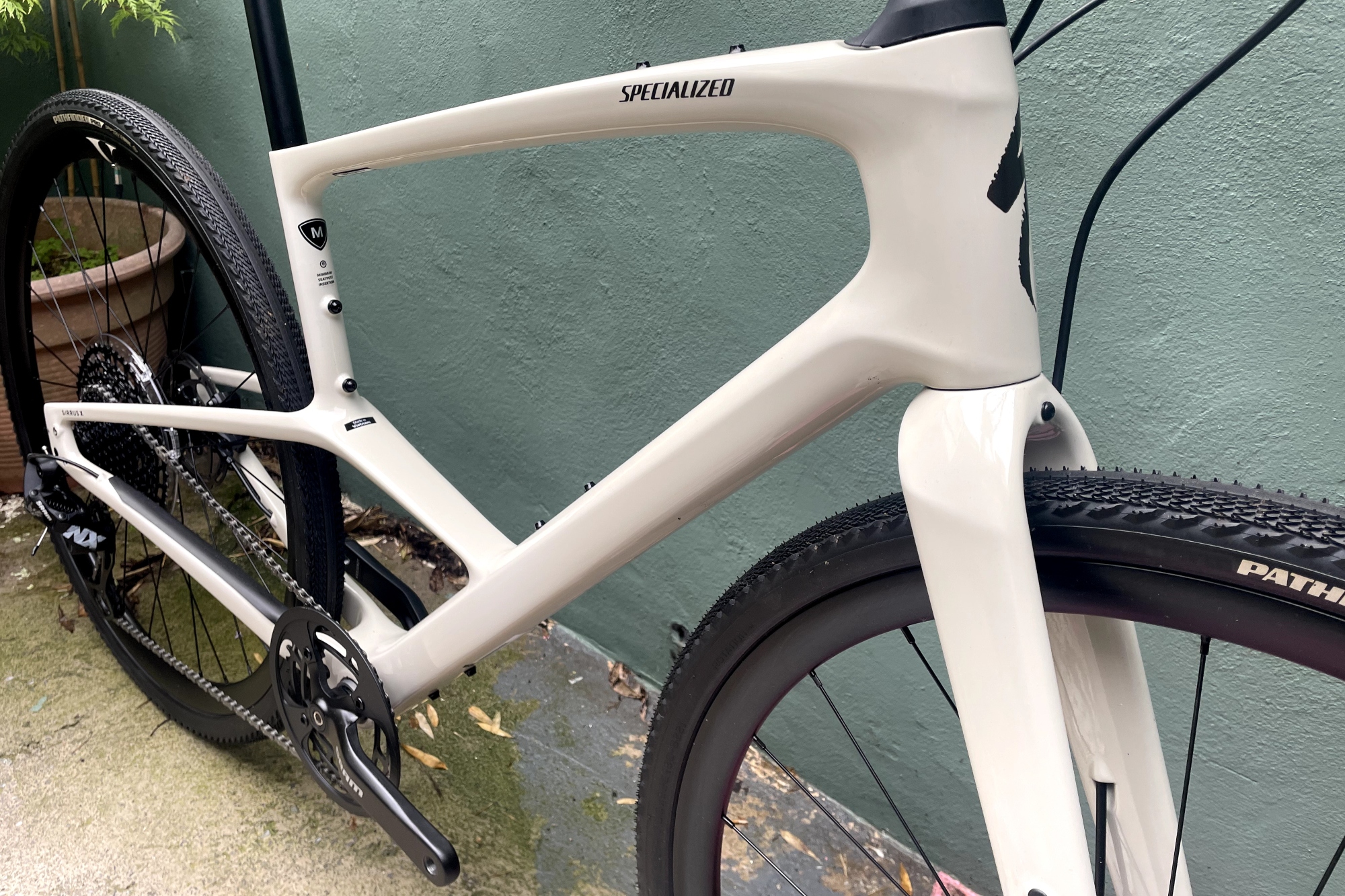
Specialized’s Futureshock 1.5 suspension system, a non-adjustable spring ‘hidden’ in the headtube, gives the Sirrus X 20mm of front end travel. Combined with the Compliance Junction and the carbon layup used, it points to an able bike that should be adept at reducing fatigue on rougher terrain.
Other noteworthy details include room for 42mm tires, internal cable routing, an integrated seat clamp and mounts for three bottle cages, a top tube bag and Specialized’s Plug + Play rack and fenders. Suffice to say it's ready for both commuting and light touring duties.
The Sirrus uses what Specialized calls its ‘fitness geometry’. For a size medium, that means a stack height of 625mm combined with a reach of 380mm. The seat tube and head tube angles are a relatively slack 73.5 and 70 degrees respectively, while the 1065mm wheelbase suggests a stable ride.
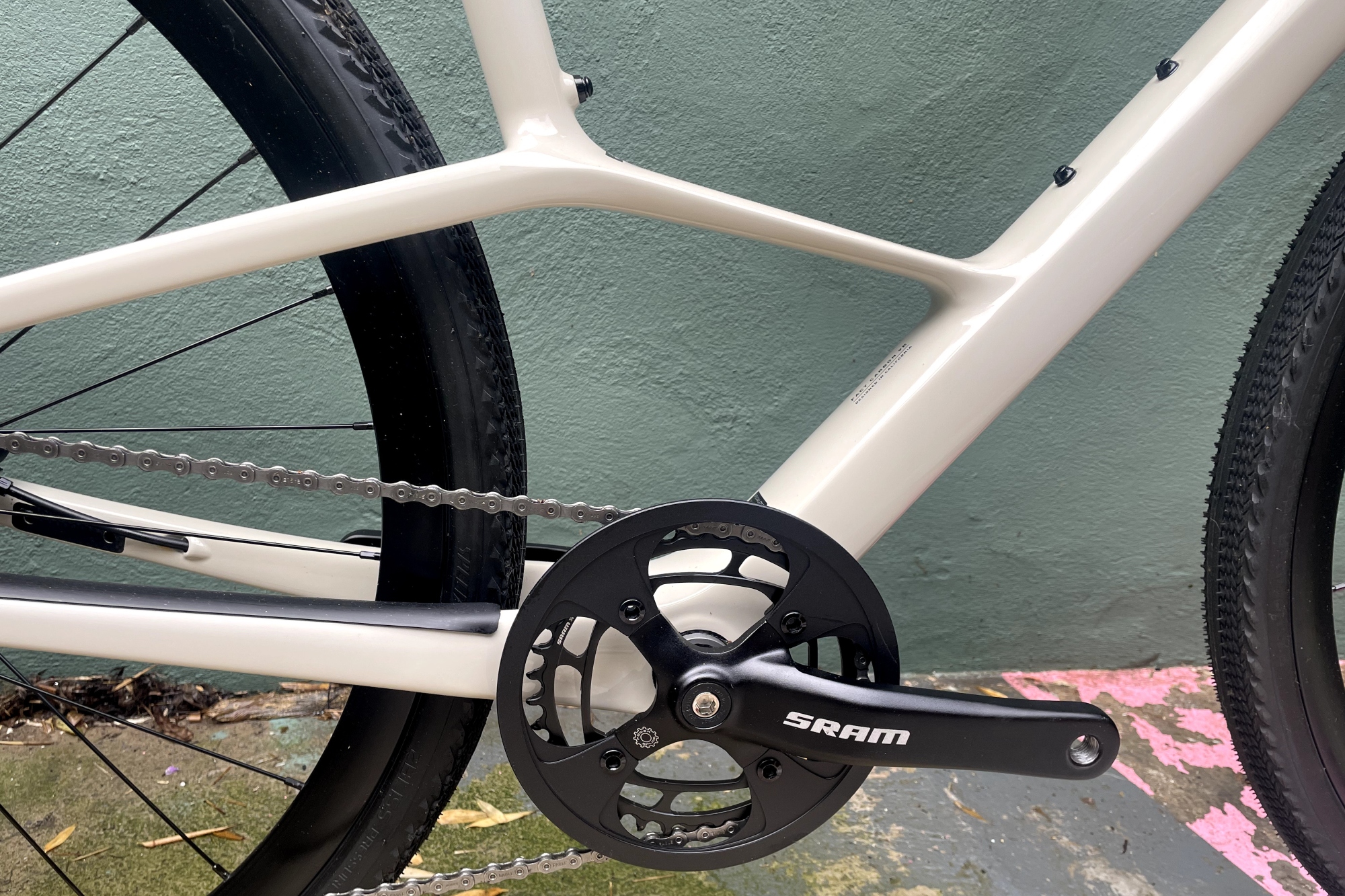
To help make the Sirrus X capable of handling both on and off-road terrain it’s been equipped with a 12-speed 1x SRAM groupset that matches a 38t chainring with a 11-50t cassette - certainly enough to handle steep, loose gravel trails but possibly compromised at the other end for faster road riding? As for the makeup of the groupset it uses Eagle NX shifters and rear mech, with a three-piece SRAM S650 crankset and square tapered bottom bracket - not something you’d typically see on a bike with a four-digit price tag.
The tire choice - Specialized’s 38mm Pathfinder Pros - also looks to aid the bike's versatility, with the tread divided between small diamonds on the shoulders for traction and a central slick for reduced rolling resistance. They’re tubeless ready but were set up with tubes throughout the testing period. The wheels are a generic alloy affair, with sealed bearings and thru-axles.
Another nod to the Sirrus X’s off-road credentials come in the choice of bars - alloy, with a 9-degree backsweep, a 15mm rise and, according to my measurements, 700mm wide. Other details include Tektro hydraulic disc brakes and a short nose Body Geometry saddle.
Together it makes for an interesting package. It certainly looks fit for purpose, and the frame is as intriguing as it is striking. But for around $/£2k are the choice of components a little rudimentary? The proof will be in the riding, but it’s clear that the majority of the bike’s total cost is found in that frameset.
Specialized Sirrus X 5.0: the ride
While it takes a few rides and a good few miles to truly appreciate how a bike performs, the Sirrus X made quite the first impression. It felt lighter and more sprightly than any hybrid I’d ridden before. And far more comfortable too.
It turned out to be lasting. The bike continued to impress with its quick, easy acceleration. It held the speed well too, and despite the upright position it promotes, felt suitably fast. But it was the level of comfort that was most noticeable. There was considerably less chatter through the seat post and into the seat compared to aluminium hybrids I’ve ridden in the past.
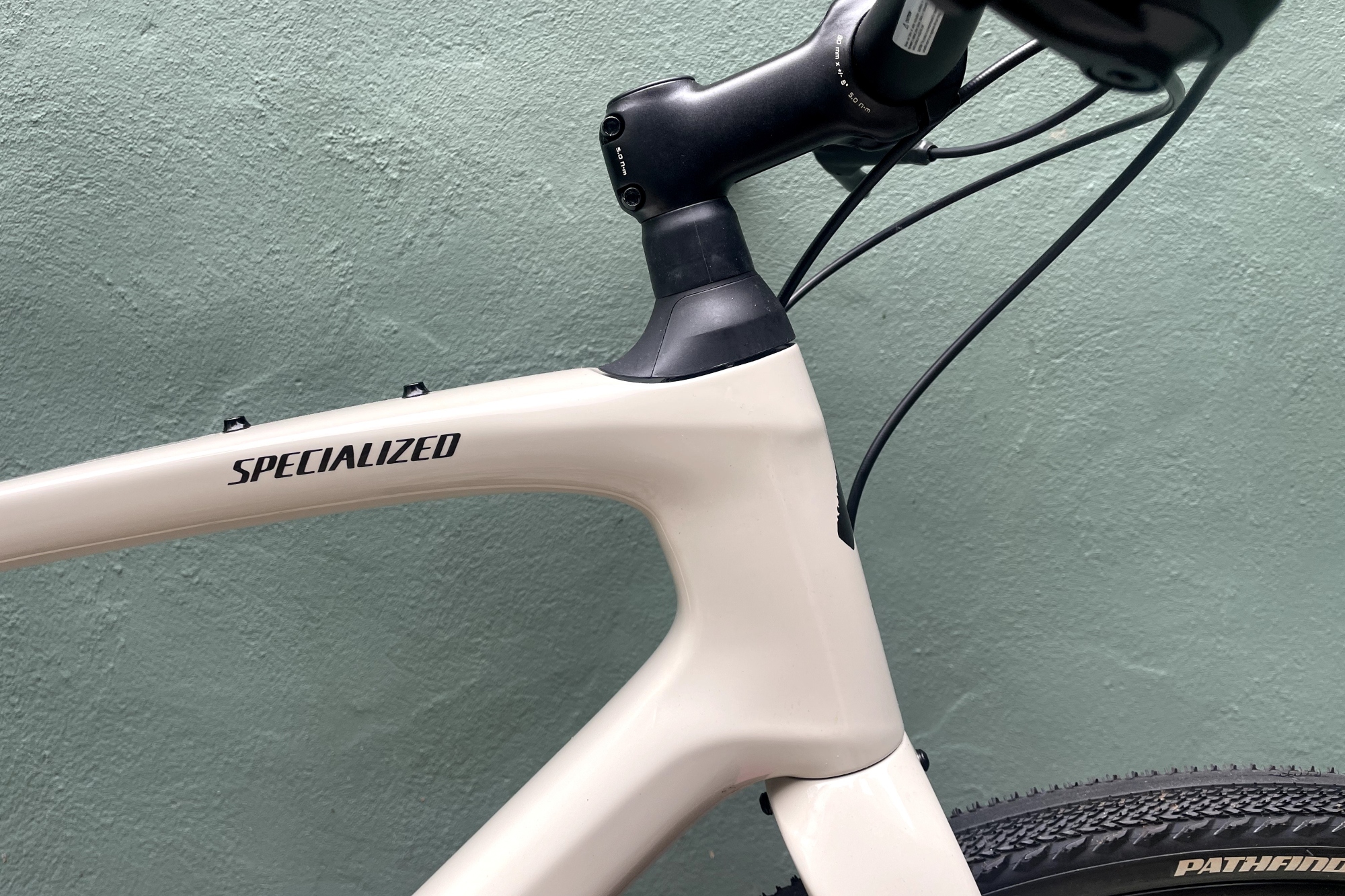
The same was true at the front end, though interestingly the Future Shock was barely perceivable. I’d been a little concerned that it might prove to be overkill, but it applied itself with an unexpected subtlety. What was noticeable was the lack of fatigue I felt in my hands and arms after riding.
This was accentuated when I took the bike off-road. Riding an undulating river path littered with tree roots, sharp rocks and plenty of dirt and grit, the Sirrus proved to be at home. The combination of the rear end Compliance Junction and front end Future Shock appeared to work as an efficient tag team. It’s hard to conclude the degree to which each performed, but given that I was riding 38mm tires run at higher than preferred pressures due to the use of inner tubes, the lack of road buzz while riding and fatigue once finished, suggests they both played their part well.
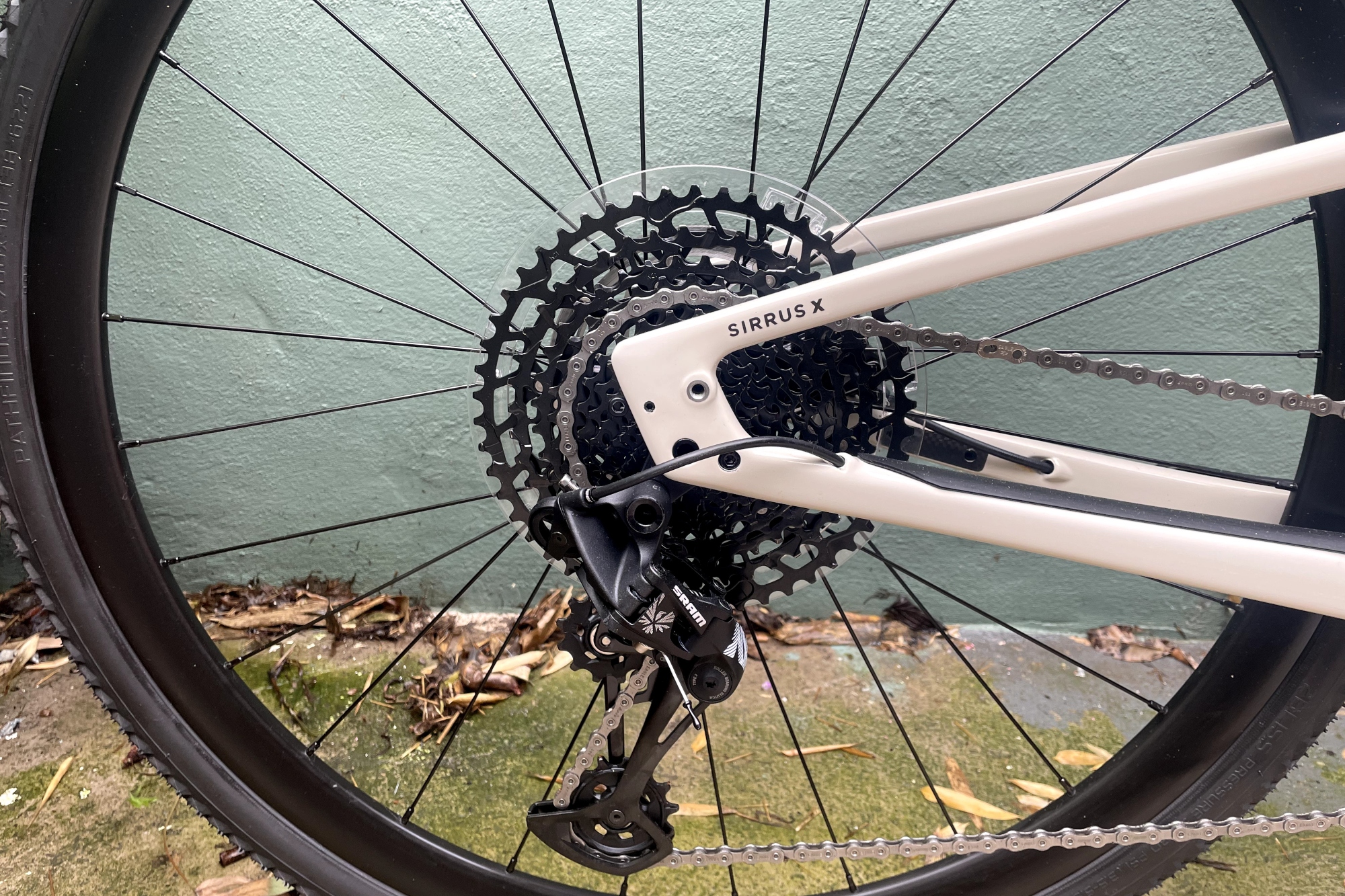
A 1x 12-speed drive chain makes sense for a bike such as this, and the wide gear range, designed to favour the low gears, worked well in general. The larger sprockets allow you to stay seated on steeper climbs, which makes sense given the bike’s upright riding position. It also means added traction if that climbing is taking place off-road on loose surfaces.
Naturally, the 38t chainring means that top end speed is sacrificed and during flatter road rides I did find myself occupying the first two or three sprockets for the majority of the time. That said I never felt like I needed more; this is a bike that’s likely to be used around town and along cycle paths and off road trails where there’s a limit to how fast you need to, or should be, going. It should also be noted that the redesigned Sirrus is also offered in a road-focussed build, which uses a 40t SRAM Rival chainset and 32mm tires.
While the Sirrus loved to roll along at speed, with the carbon frame providing plenty of stiffness to ensure that your efforts are rewarded, it also performs well in cruise control. There were times when I simply took it for a spin and here it felt like riding along in your favorite armchair.
There were a couple of aspects to the bike that were less comfortable however. The wide bars, while helpful on tricker sections trail, just felt too wide for the majority of the time. On road rides I found myself resting my hands inside the grips, which wasn’t ideal. They were also a bit of hindrance when riding in traffic and around town. Admittedly I have spent the last thirty-plus years using relatively narrow drop bars, so those used to riding mountain bikes are unlikely to have a similar problem. Oh, and I didn’t get on with the saddle either.
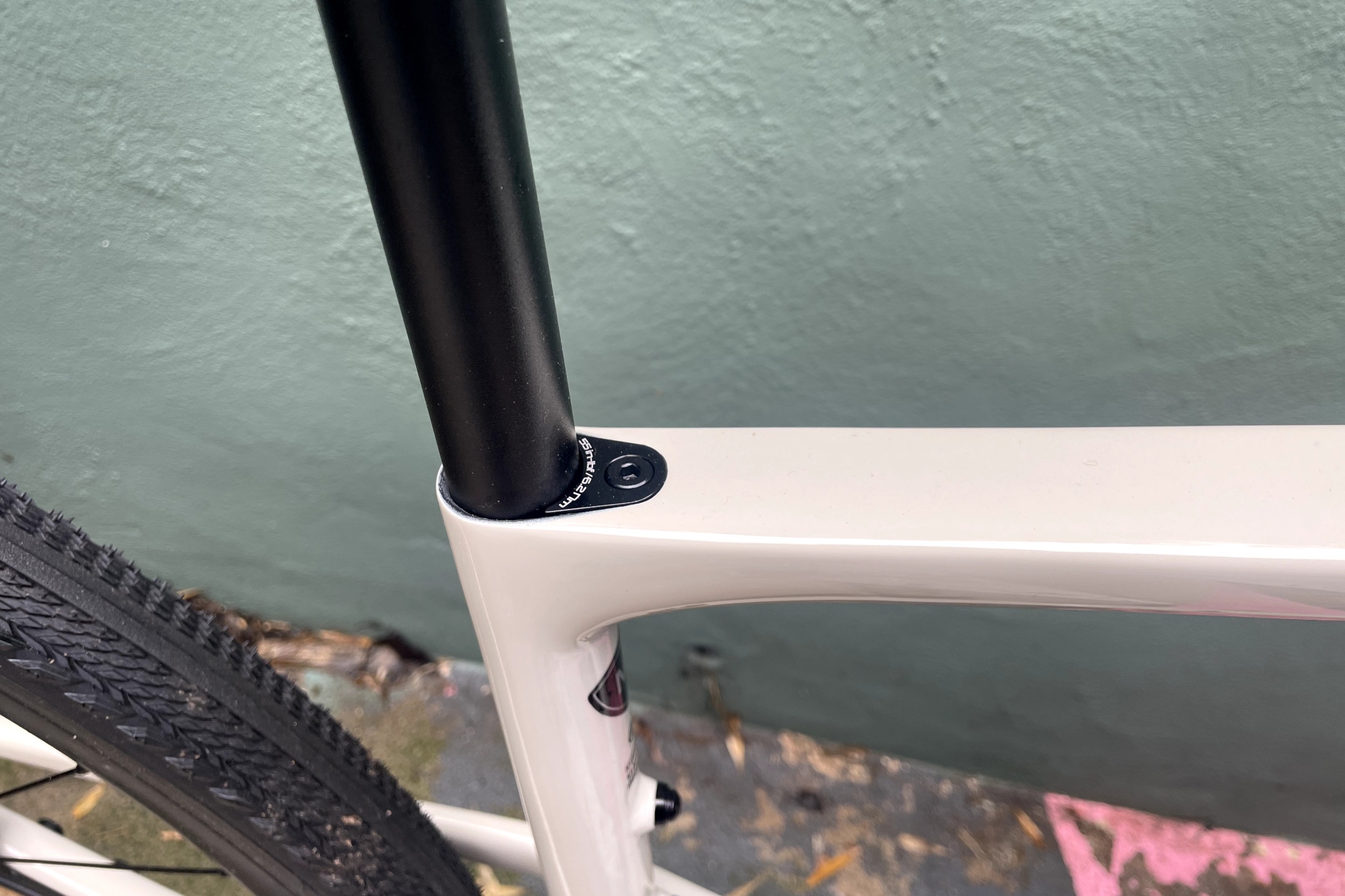
The more time I spent with the bike, the more I pondered the choice of components. They all worked well. The gears, entry level NX Eagle, were a little clunky at times, but I have yet to drop a chain or skip a gear. Likewise the basic Tektro brakes were a tad grabby but improved over time, and again didn’t cause any problems. But, along with the wheelset, they felt underwhelming when viewed both alongside the frameset and in relation to the bike’s cost.
As I mentioned earlier, it’s clear that most of your money is going into the frameset - and to be fair I’d imagine that’s what most people are buying when they purchase the bike. But I couldn’t help but feel that the star of the show still deserves an impressive supporting cast - and on the Sirrus X 5.0, while they never fluff their lines, don’t exactly bring the house down either.
Checking the specifications of the more expensive 6.0, I’d likely be inclined to opt for this model. Here you’re getting a two-piece chainset, GX Eagle shifters and mech, SRAM Level brakes and DT Swiss wheels. All are upgrades worthy of the frameset and the extra cost. A quick change of the tires would see it assume off-road capabilities comparable to the X 5.0.
In fact, I ended up spending a fair amount of time on my rides, compiling my dream build for a frameset I’d fallen in love with. An Eagle AXS groupset, some lightweight carbon hoops, a favored saddle - the list went on.
Specialized Sirrus X 5.0: value and conclusion
At $2,250 / £1,950 the Sirrus X 5.0 is quite an investment, particularly if ‘hybrid’ typically conjures up uninspiring sub $/£500 bikes. But this bike is far from typical and should have plenty of appeal for those wanting a flat bar fitness bike that’s more ‘pride and joy’ rather than ‘workhorse’. Given that the existing 10-speed Sirrus 4.0, with an aluminium frame, carbon fork and Future Shock 1.5, retails for $1,500 / £1,400 the X 5.0’s price tag appears more than reasonable.
Specs
- Frame: Specialized FACT 9r Carbon
- Forks: Specialized FACT 9r Carbon Monocoque w/ Future SHock 1.5
- Groupset: SRAM NX Eagle w/ SRAM S650 3-piece crankset
- Brakes: Tektro HD-R510, hydraulic disc
- Wheels: 700C disc, double-wall alloy
- Tires: Pathfinder Pro, 2Bliss Ready, 700x38mm
- Handlebars: Double-butted alloy, 9-degree backsweep, 15mm rise, 31.8mm
- Stem: Future Stem, Comp
- Saddle: Body Geometry Power Sport, steel rails
- Seatpost: Alloy, 2-bolt, 14mm offset, 27.2mm







